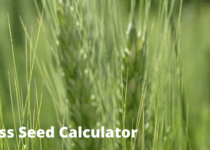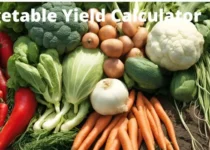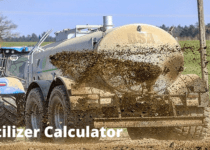Soil Calculator
What is soil? – Soil definition
Have you ever wondered what are you stomping on? Was it it always here or has it been here since eternity? Well, the easiest way to answer these questions would be to explain that the soil definition is that it is a mixture of things that have fallen or just found themselves on the ground. It consists of organic matter, liquids, gases, minerals, and living organisms. The soil has been created by endless interactions between those ingredients, with the additional influence of some third parties, such as climate, weather and lots and lots of time. It usually starts with a parent material such as quartz, calcite or feldspar which undergoes weathering – the process of disintegration. Weathering can be caused by:
- Physical factors: temperature changes, cycles of wetting and drying and movement of material by wind, water, or gravity.
- Chemical factors: processes of the solution, hydrolysis, oxidation, and many others.
- Living organisms: bacteria, fungi, earthworms, and even human activity.
Weathering of soil makes the parent material disintegrate over time into smaller and smaller pieces. This way sand, silt, and clay (the core soil ingredients) are created.
How much soil do I need?
“How much soil do I need?” – it is a question frequently asked by people beginning their adventures in gardening and plant cultivation. To answer this question, the first step is to establish the volume of soil needed. You can do it in the following way:
- Determine the length and width of the area you want to cover with soil. For example, we can assume an area of length
l = 14 ydand widthb = 4 yd. - Calculate the area, multiplying the length by width. In our case,
A = 14 * 4 = 56 yd². You can also type the area directly into our calculator if you choose a more sophisticated shape. We’ve got area calculators for of many geometric figures, such as the trapezoid or the hexagon. For even more examples, visit the2d geometrysection of our math calculators. - Establish the depth – and thickness of the topsoil layer. Let’s say it’s
d = 0.5 yd. - Multiply the area and dirt layer thickness to obtain its volume:
56 * 0.5 = 28 yd². - The volume of soil required is equal to this value. Our soil calculator will display it for you.
How to estimate garden soil quantity?
Let’s deal with a real-life situation. Imagine that you have just built your beautiful house, with a roof finished with warm red tiles. You want to surround it with a grass yard and pavement made of tiles. To calculate the number of tiles and the amount of paver sand you need to buy before getting to work we recommend you visit our tile and paver sand calculators. It would be a shame to buy too much or even worse – not enough materials, and have to go back to the home improvement store.
Now, let’s get to the grass yard. We want to calculate the required quantity and cost of garden soil. As you can see, we cannot just type the width and length into our dirt calculator as there is a pool in the middle of it. How to deal with this problem?

- First, we need to divide the grass yard into four rectangles: 1, 2, 3, and 4.
- Now, we have to measure the width and length of each sector:
- Sector 1 has a width of 2 yds and a length of 25 yds;
- Sector 2 has the width of 3 yd and the length of 2 yd;
- Sector 3 has a width of 3 yds and a length of 10 yds;
- Sector 4 has a width of 2.7 yd and a length of 25 yd.
- Let’s calculate the area of each rectangle:
- Sector 1: the area is equal to 2 yd multiplied by 25 yd, which gives 50 yd²;
- Sector 2: the area is equal to 3 yd multiplied by 2 yd, which gives 6 yd²;
- Sector 3: the area is equal to 3 yd multiplied by 10 yd, which gives 30 yd²;
- Sector 4: the area is equal to 2.7 yd multiplied by 25 yd, which gives 67.5 yd².
- We have to sum up these four different areas to get the area of the whole yard.
50 yd² + 6 yd² + 30 yd² + 67.5 yd² = 153.5 yd²You can already jump to the third point of topsoil calculator instruction in How much soil do I need? paragraph. - It is time to choose the desired thickness (depth) of the topsoil level. Let’s make it 0.6 yd. We want to create enough space for the roots of the grass to grow freely and without any obstacles. Furthermore, a thicker layer of topsoil will be able to absorb more water and hold the moisture for a longer period.
- You can calculate the required volume of soil by multiplying the grass yard area by the desired thickness of soil.
153.5 yd² * 0.6 yd = 92.1 yd³ - The last thing to do is to assess the estimated weight of the required soil and its cost. The weight of the cargo may come in handy when transporting the soil. It would be nice to know that your truck or trailer will endure the burden of your purchase. As we have already mentioned, you should find the density of the chosen soil on its package. You just need to multiply it by the volume of our topsoil layer. And last but not least – money. Can you afford such an expense? Maybe we could save some money by reducing the thickness? To know that, you need to calculate the total cost. With our soil calculator, you can do it by multiplying the volume of purchased soil or its weight by the price of one cubic yard or price of one ton (other units of weight or volume are also available).



